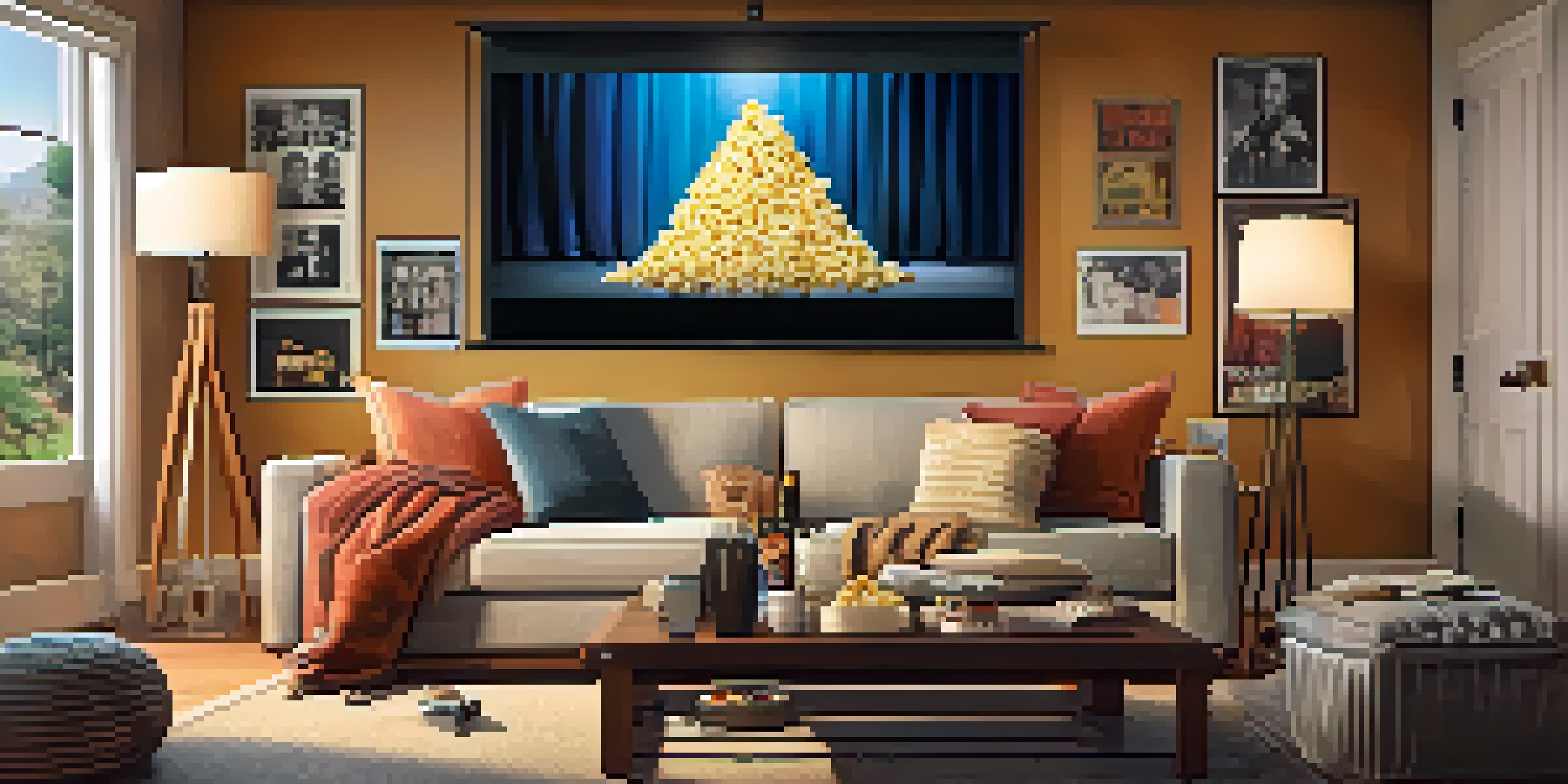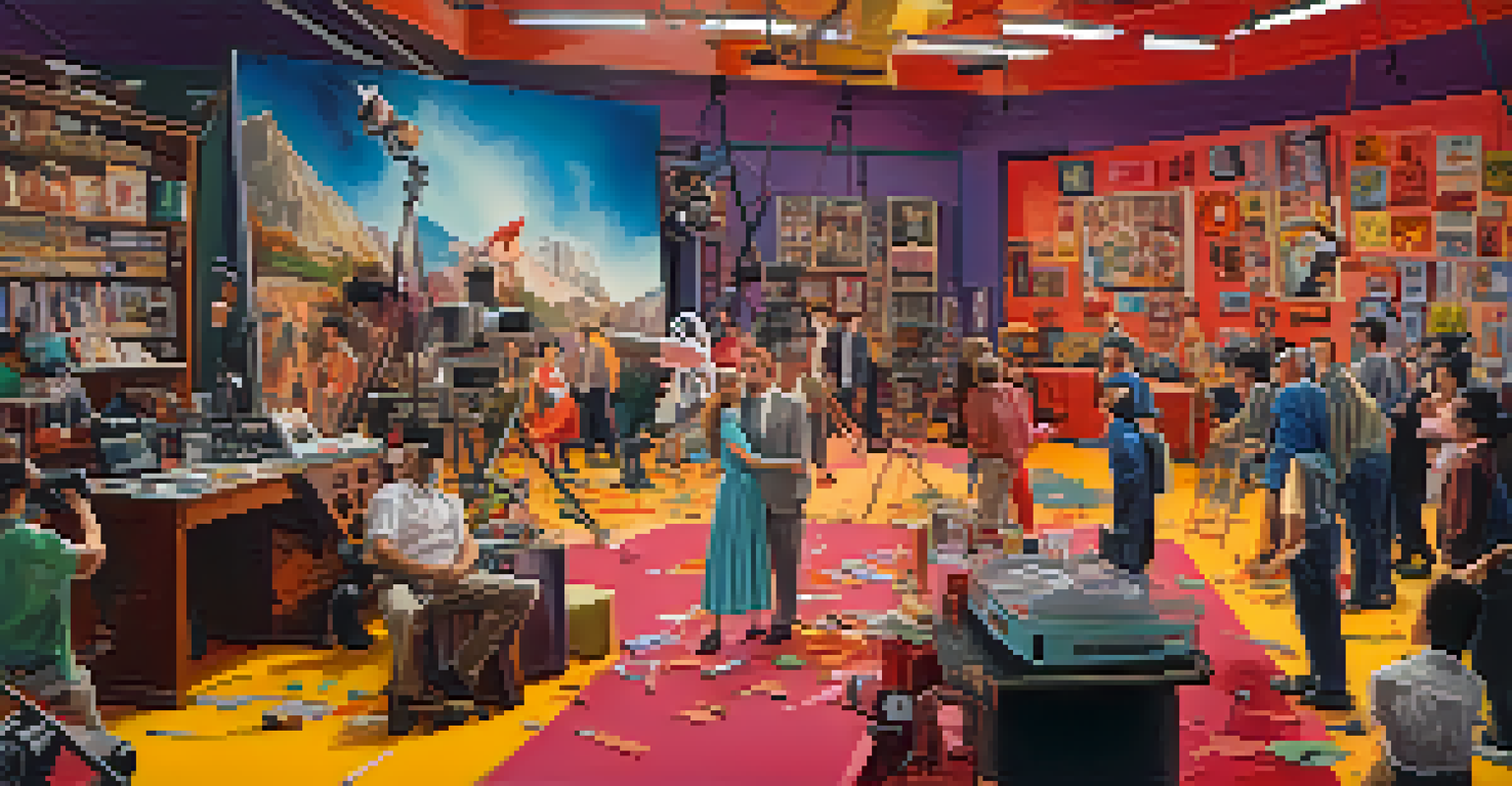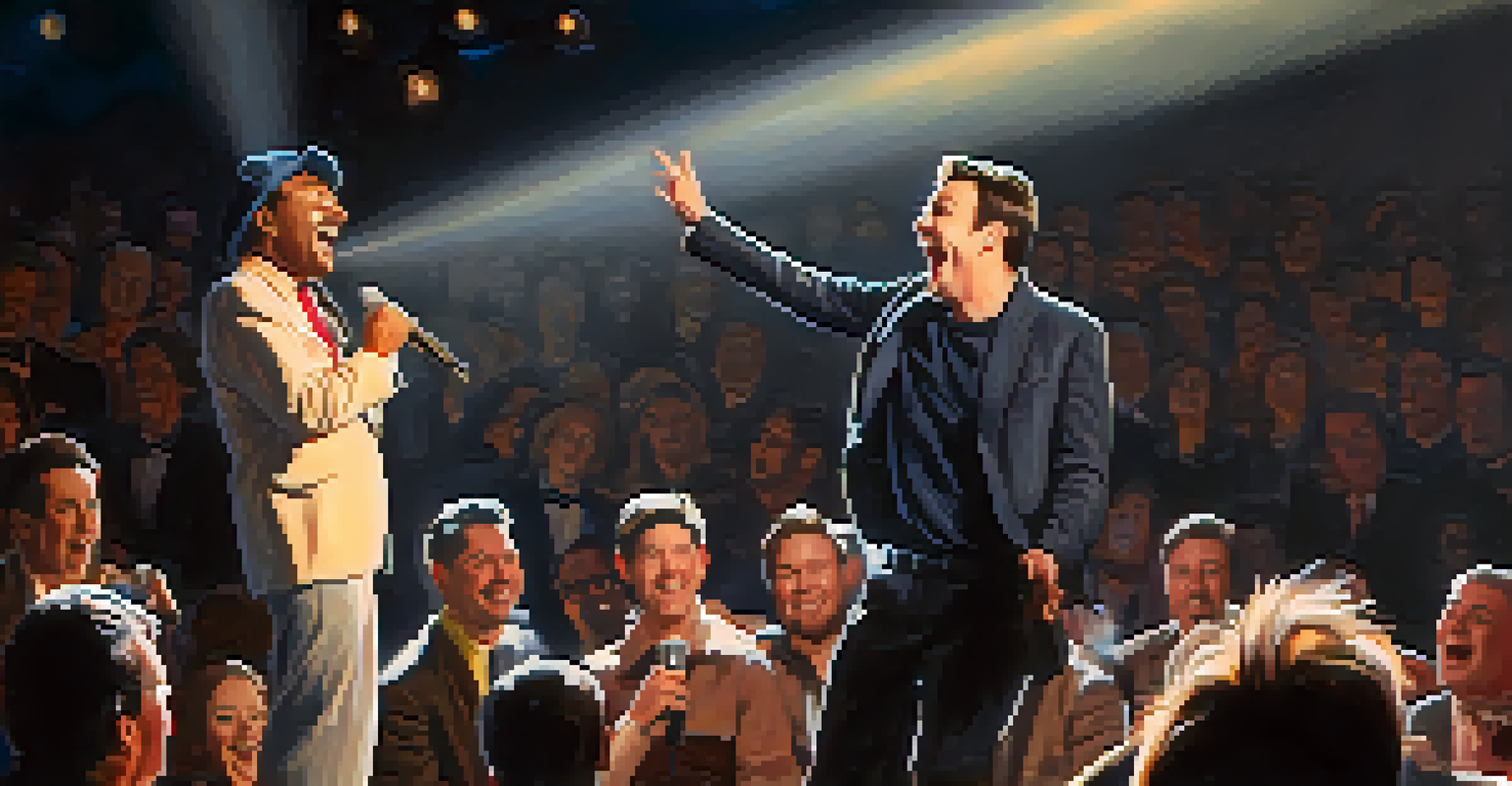Cinematic Timing: The Art of Humor in Film Scenes

Understanding Cinematic Timing and Its Importance
Cinematic timing refers to the rhythm and pace at which scenes unfold, crucial for engaging audiences. Just like a musician plays with tempo, filmmakers manipulate timing to evoke emotions, especially humor. For example, a perfectly timed pause can transform a simple line into a punchline, building anticipation that makes the joke land even harder.
Timing is everything. In comedy, it’s the difference between laughter and silence.
Timing isn't just about speed; it's about knowing when to hold back and when to let loose. Think about classic comedies like 'Airplane!' where the rapid-fire delivery keeps viewers on their toes. Each moment is meticulously calculated, creating a dance between dialogue and action that enhances comedic effect.
Ultimately, mastering cinematic timing can make or break a film's humor. It’s a skill that requires practice and an intuitive understanding of both the material and the audience’s reactions. By honing this craft, filmmakers can elevate their storytelling, ensuring that laughter resonates long after the credits roll.
The Role of Pacing in Comedic Scenes
Pacing in film determines how quickly or slowly a story unfolds, significantly affecting humor. A well-paced scene can build tension, making the eventual punchline even more satisfying. For instance, in 'The Office,' the slow pacing of Jim's pranks on Dwight creates a comical buildup that pays off in hilarious ways.

Conversely, rushing through comedic moments can leave the audience confused rather than amused. When jokes are delivered too quickly, they often fall flat, as there's no time for the audience to process the humor. Finding that sweet spot between too slow and too fast is vital for comedic success.
Cinematic Timing Enhances Engagement
Mastering cinematic timing is essential for filmmakers to evoke emotions and keep audiences engaged in the story.
In essence, pacing is the backbone of comedic timing. It’s about creating a rhythm that allows the audience to absorb the humor fully, ensuring every laugh counts. Directors and editors must work closely to strike this balance, crafting scenes that keep viewers engaged and entertained.
Physical Comedy and Timing: A Perfect Pair
Physical comedy thrives on timing, with visual gags relying heavily on precise movements and reactions. Think about Charlie Chaplin or modern favorites like Jim Carrey, where every exaggerated gesture is meticulously timed for maximum impact. Their ability to blend movement with humor showcases the importance of timing in physical comedy.
Comedy is all about timing. You have to know when to pause, when to let a moment breathe.
In scenes where physical comedy is involved, the timing of actions can create a domino effect of laughter. For example, in 'Home Alone,' Kevin's traps are not only funny but timed perfectly with the burglars' reactions, making each mishap more amusing. It’s a brilliant combination of setup and payoff that captivates audiences.
Thus, the art of physical comedy is a visual testament to the power of timing. Every slip, trip, and fall is crafted to elicit laughter, proving that sometimes actions speak louder than words. When combined effectively, physical comedy and timing create unforgettable moments that resonate with viewers.
Timing in Dialogue: The Punchline's Best Friend
Dialogue is a crucial element in humor, and its timing can significantly influence how a joke lands. A well-placed pause before a punchline can heighten anticipation, making the delivery that much funnier. Think of stand-up comedians who use silence strategically to let the audience absorb the setup before delivering the joke.
In films, witty banter often relies on timing for comedic effect. Characters like Tony Stark in the Marvel series showcase how rapid exchanges can create a rhythm that enhances humor. The timing of each line is essential to maintain the flow and keep the audience laughing.
Pacing Builds Humor Effectively
The right pacing in comedic scenes allows for tension buildup, making punchlines more satisfying and impactful.
Ultimately, the timing in dialogue can transform a simple conversation into a comedic masterpiece. It’s about balancing delivery and timing, ensuring that every line breathes life into the scene. When done right, dialogue timing can elevate the entire film, creating memorable and quotable moments.
Using Silence and Pauses to Enhance Humor
Silence can be a powerful tool in comedy, often creating a moment of reflection before the punchline hits. Pauses can build tension, allowing the audience to anticipate what’s coming next. For example, in 'The Office', Michael Scott's awkward silences often amplify the humor of the situation, making his character even more relatable.
Incorporating silence effectively requires a keen sense of timing. A well-timed pause can make a line more impactful, leading to a bigger laugh. This technique allows audiences to soak in the moment, creating a shared experience that draws them in deeper.
Thus, while dialogue and action are essential, silence can be just as effective in creating humor. It invites audiences to engage actively, making them part of the joke. When used wisely, pauses can lead to some of the most memorable comedic moments in film.
Cultural Differences in Humor and Timing
Humor varies widely across cultures, and understanding these differences is crucial for comedic timing. What might be hilarious in one country could fall flat in another due to cultural nuances. Films like 'Borat' highlight how timing and cultural context intertwine, making certain jokes resonate differently with diverse audiences.
Incorporating cultural elements requires a delicate balance; timing must align with the audience's expectations and sensibilities. For instance, British humor often relies on irony and understated delivery, whereas American humor may lean more towards exaggerated expressions and overt punchlines. These distinctions highlight the importance of tailoring timing to fit cultural contexts.
Cultural Context Shapes Humor Timing
Understanding cultural differences in humor is crucial for effective comedic timing, as it ensures jokes resonate with diverse audiences.
Ultimately, successful humor transcends language, but it requires a deep understanding of timing and cultural relevance. Filmmakers must consider their audience, ensuring that humor is not only funny but also relatable. This sensitivity can lead to universal laughter, bridging gaps between different cultures.
The Impact of Editing on Comedic Timing
Editing plays a pivotal role in shaping comedic timing, as it determines the final rhythm of a film. Editors must decide which takes to use, crafting a pace that enhances humor. For instance, in 'Superbad,' the quick cuts between characters reacting to a joke amplify the comedic effect, making the scene more engaging.
The timing of cuts can also create unexpected surprises, enhancing the humor. A sudden jump cut can catch viewers off guard and elicit laughter. This technique, used effectively, keeps the audience on their toes, ensuring they remain invested in the unfolding story.

Therefore, editing is not just a technical task; it’s an art form that influences how humor is perceived. By manipulating timing through cuts and transitions, editors help filmmakers achieve their comedic vision. The result is a polished final product that maximizes laughter and enjoyment.